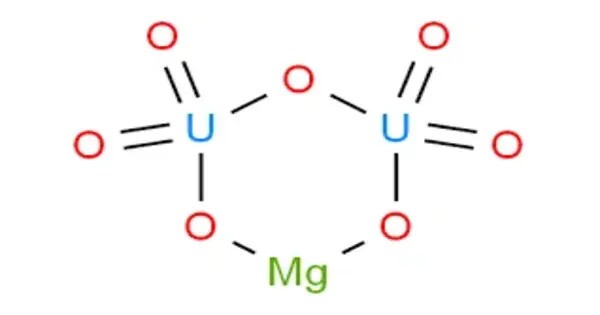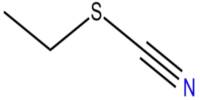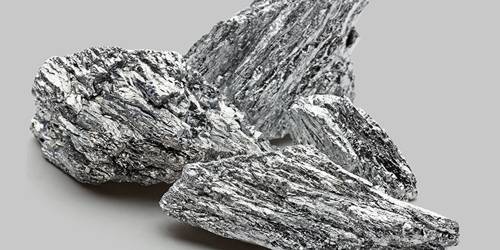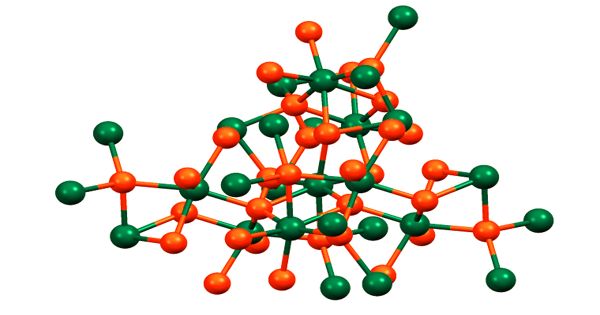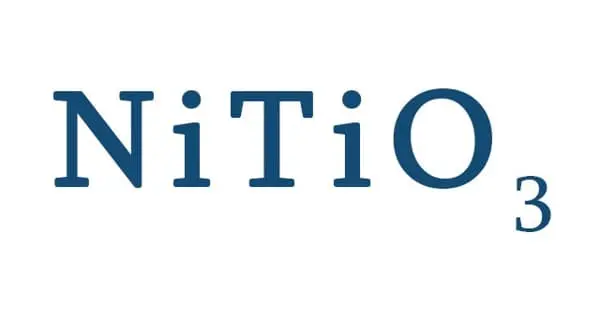Magnesium diuranate (MgU2O7) is a compound of uranium. It is an inorganic compound consisting of magnesium (Mg) and uranyl ions (UO₂²⁺). This compound belongs to a class of uranium-based materials known as uranates, which contain uranium in its +6 oxidation state (as UO₂²⁺). It is known in the uranium refining industry as “MDU” and forms the major part of some yellowcake mixtures. Yellowcakes are an intermediate product in the uranium refining process.
Magnesium diuranate is sometimes associated with nuclear fuel cycle processes, as uranium compounds can be involved in the generation of nuclear energy, though magnesium diuranate itself is not a primary nuclear fuel.
Properties
- Chemical formula: MgU2O7
- Molar mass: 612.36 g·mol−1
- Appearance: It typically appears as a yellowish powder.
- Solubility: It is not highly soluble in water but can dissolve in strong acids. Its solubility is an important consideration in nuclear chemistry and processing.
- Radioactivity: As uranium compounds are radioactive, magnesium diuranate is radioactive.
- Thermal Stability: The compound is thermally stable under normal conditions but can decompose at very high temperatures, releasing uranium oxide and possibly other byproducts.
Structure
The structure of magnesium diuranate consists of layers of magnesium ions between chains of uranyl ions, forming a crystalline structure. The uranyl ion (UO₂²⁺) is key to many uranium compounds and typically has a linear shape due to the bonding of two oxygen atoms with the central uranium atom.
Occurrences
Magnesium diuranate is not commonly found as a naturally occurring mineral. However, it can be synthetically produced in specific nuclear and chemical processes.
Production in Uranium Ore Processing: It can be produced during the extraction and refining of uranium ores. When uranium is processed to create uranium oxide (U₃O₈) or other uranium compounds, magnesium diuranate might be formed as an intermediate phase, especially when magnesium salts are used in the extraction process.
Nuclear Fuel Cycle: In some nuclear fuel cycles, magnesium diuranate might be encountered as part of the process of converting uranium into different compounds for reactor fuel or nuclear waste management.
Nuclear Waste: It can be a product of uranium waste and could potentially be involved in the storage or disposal of nuclear materials.
In summary, magnesium diuranate is mainly relevant in nuclear chemistry and the uranium extraction process. While not commonly occurring in nature, it may form during certain industrial processes related to uranium processing. The compound’s properties, such as radioactivity and thermal stability, are significant in the context of nuclear materials.
